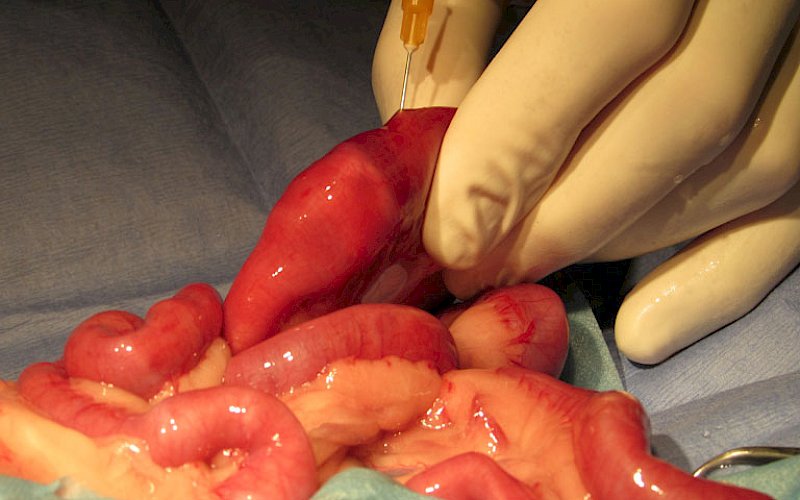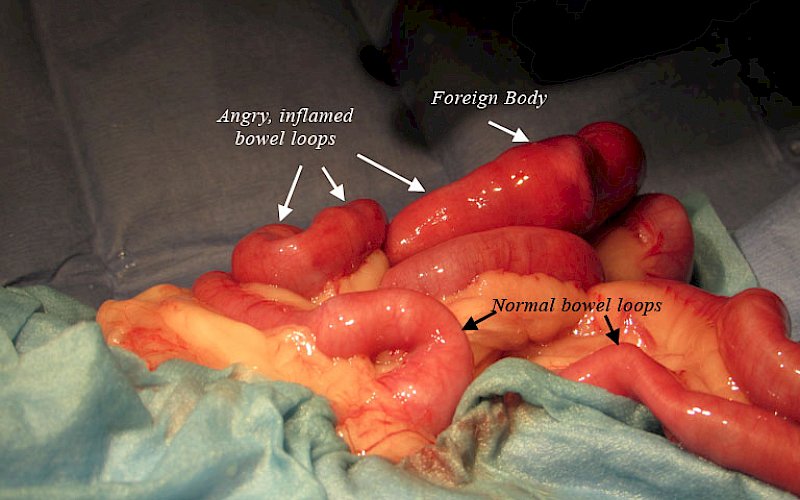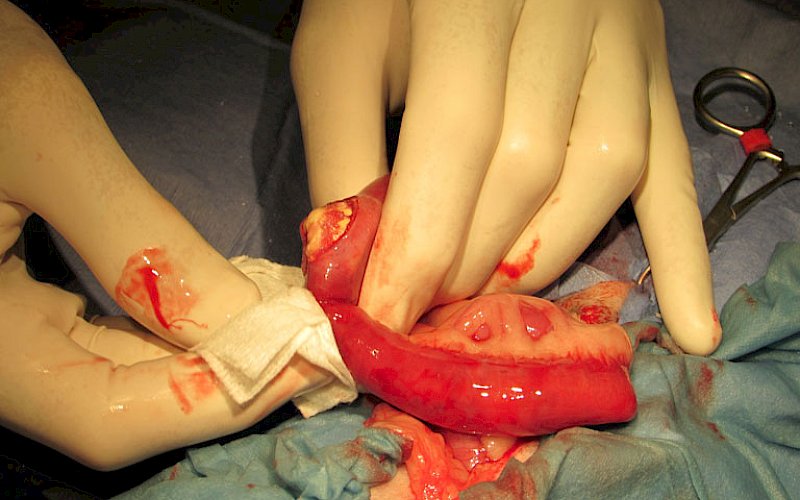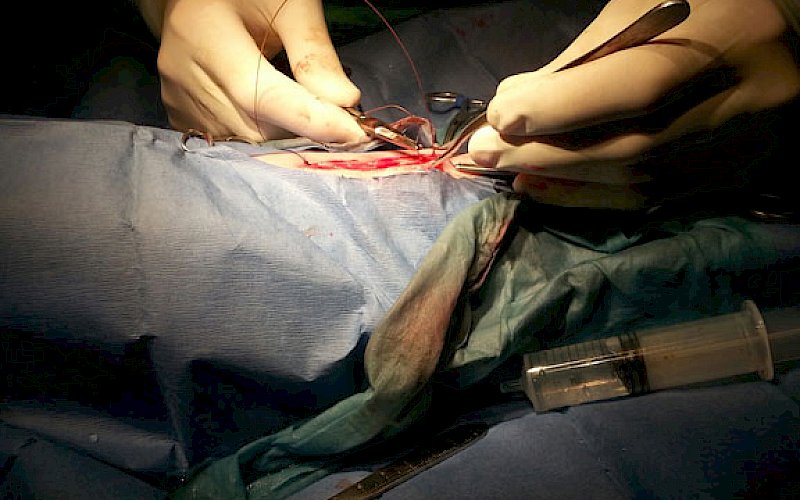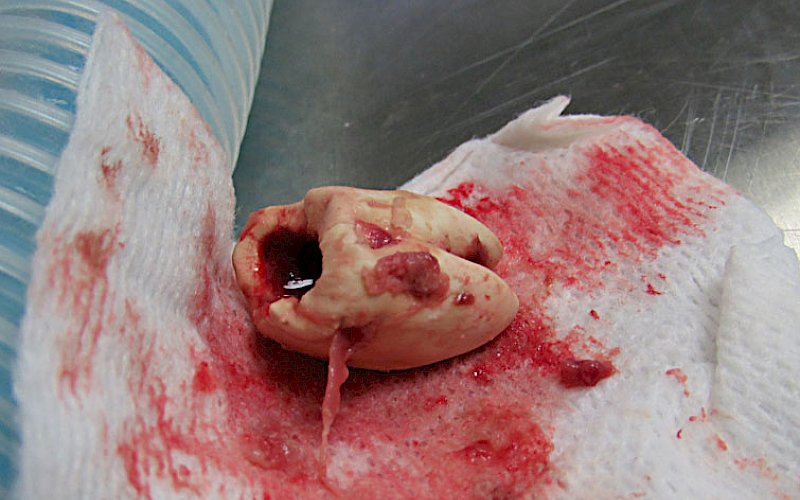Case of the Week #5 – GI Foreign Body
Pet: Maxwell
Age: 3.5 yrs
Species: Canine
Breed: Dachshund Chihuahua cross
Color: Brown and white
Sex: Male, neutered
We had to make this our Case of the Week because it belongs to one of our employees who shall remain nameless. Max was happy and healthy until Tuesday night. When Max’s owner left for work Tuesday morning he was eating and drinking great and playing like a puppy, just as he always did.
When she got home from work Tuesday night he wouldn’t eat his dinner, which was EXTREMELY unusual for him. Shortly thereafter he started vomiting and proceeded to vomit the rest of the night. The vomitus contained food at first, but after the second bout of vomit, it was just pure bile. He still tried to drink water, but it immediately came back up. Other signs included extreme lethargy and hiding under the bed. There was no diarrhea, and otherwise no outward signs.
She brought him into work with her Wednesday morning. On physical exam he was quite depressed and had a temperature of 99.8 (normal in dogs is 101 – 102.5°F), his heart rate was elevated at 155 bpm (normal is approximately 120 bpm) and his gums were dry and tacky, indicating a dehydration level of approximately 7%. Upon palpation of his abdomen a firm, round object of approximately 1 cm was palpated in his lower caudal abdomen. He was uncomfortable upon palpation. No other abnormalities were found on the physical exam.
Radiographs (x-rays) were shot to assess his abdomen. The firm object was located in the intestine in the caudal left abdominal quadrant. Because it overlaid the colon it was not immediately obvious whether the object was located in the small or the large intestine. We took an ultrasound of his abdomen and found the object in the small intestine, halfway between the stomach and the colon.
At this point the decision was made to proceed with surgery to remove the object. The other option would have been to start high flow fluid administration and cathartics to see if we could get the object to pass. However, due to his depressed state, we decided that immediate surgical intervention was more appropriate.
Bloodwork was run and showed only minimal electrolyte disturbances, as well as non-specific changes consistent with dehydration. An IV catheter was placed and high-flow fluids were started. Max was taken to surgery and an abdominal exploratory was performed.
See pictures below:
The offending object was found as predicted in the small intestine. It turned out to be the foot off a rubber pig toy that the dog routinely played with. According to his owner, Max has had that toy for over a year and always only carried it around and played with it, never chewing on it or tearing it up. She has no idea where the pig is now, how long it’s been gone, or whether or not it’s still in mostly one piece (minus a foot, of course).
Max recovered normally and is doing very well. The moral of this story is that just because your pet hasn’t ever chewed up a toy before doesn’t mean he won’t now or someday in the future. We hear this all the time: “My dog likes to chew on socks, but he never tears them up or swallows them.” In fact, that’s the rule, not the exception, when we end up taking a sock out of the dog’s intestines. Other GI foreign bodies we remove on a regular basis include towels (especially dish towels and dish rags), underwear, carpeting, coins, rubber toys (the squeaker part of rubber toys is a very popular target for dogs), and in cats yarn and string are especially tasty.
So just because your dog or cat has “never chewed on or swallowed a sock before,” don’t count on him not doing so in the future. Instead, it’s always prudent to use high-quality, indestructible toys for them to play with, and pet-friendly digestible treats to chew if they like to tear things up. Unfortunately for her, Tammy, our employee had to learn this lesson the hard way.
Cookies on this website are used to both support the function and performance of the site, and also for marketing purposes, including personalizing content and tailoring advertising to your interests. To manage marketing cookies on this website, please select the button that indicates your preferences. More information can be found in our privacy policy here.


